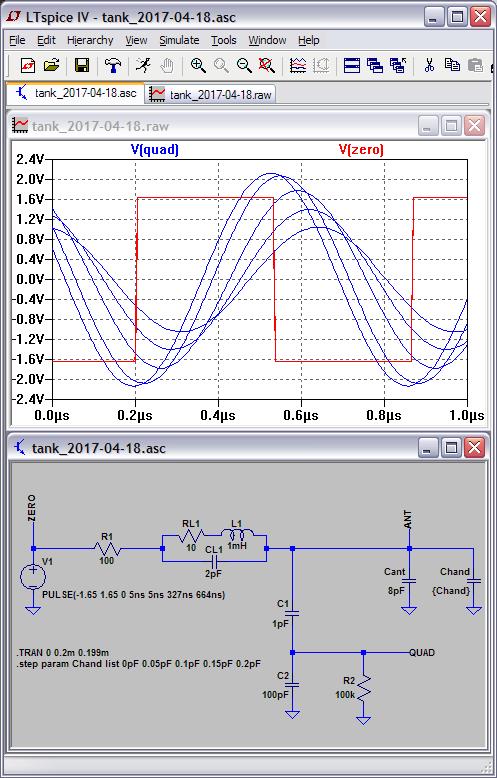Any reason you're going for this high of an operating frequency? Granted, this is in a pretty quiet spot in terms of other terrestrial transmitters. Lower frequencies require larger inductors, but they are easier to drive from a phase error standpoint, and are easier to measure. Though you could just use a digital divider (like you are doing).
High working frequency is caused by inductor 560uH and antenna capacitance (8-9pF) - if the goal is to maximize (Fmax - Fmin)/Fmax value I cannot apply caps in parallel with antenna.
Inductor size is limited by cabinet dimensions. Height is 4cm so max coil diameter is limited by ~35mm.
Max coil length is 10-12cm. Winding length 12cm with 32mm diameter would give me 1mH - max inductance I can fit in this cabinet. It has 2.6MHz self resonance and 1.8pF self capacitance.
UPDATE:
Tested on MCU.
Histogram of measures (signal period measured in 1/60,000,000 second intervals):
Interval stats
interv count
24033 15
24034 155
24035 430
24036 543
24037 456
24038 322
24039 201
24040 215
24041 158
24042 14
Best: 24036 543
Stability is good enough (but may be better). I'm expecting narrower peak +-1 measure.
Sad news. Sensitivity is very bad. When hand is 50cm from antenna, difference in measure by 1 caused by hand movement ~1cm.
Only close to antenna movement gives meaningful changes in signal.
Probably, need to improve oscillator...
Maybe, such a bad sensitivity is caused by antenna laying on wooden table?








